#viking archaeology
Text
King’s Field Pendant
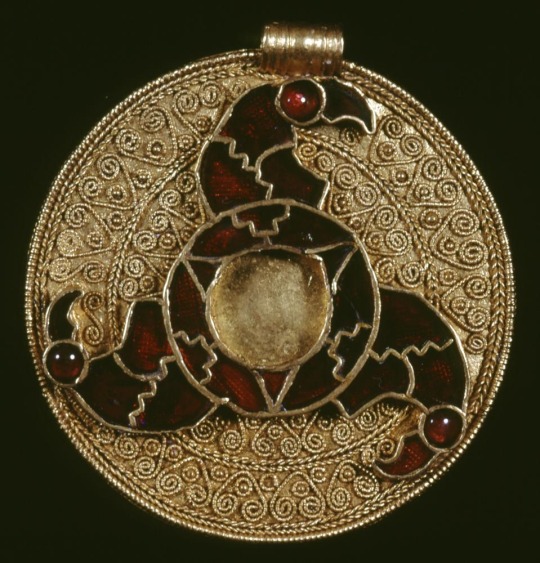
This magnificent pendant is the ultimate proof that the “Dark Ages” is an academic concept. Rather than Europe plummeting into darkness because of the “fall” of the Western Roman Empire, it’s more the lack of academic interest in the Early Middle Ages.
This Anglo-Saxon pendant was found on King’s Field (Kent) and is made of gold and garnet, but decorated extremely intricately with gabuchon, filigree and granulation. The garnet was used to form a triskele with round centre and ending in bird heads. At just 3,5 cm across, this was made by a master craftsman with materials from all over the known world.
The pendant might have been worn on a bit of string or rope, or it may have been worn as part of a glass beaded necklace. The pendant likely belonged to a woman.
The British museum, England
Museum nr. .1145.’70
Found in King’s Field - Kent, England
#merovingian#anglo saxon#viking#Vikings#frankish#carolingian#charlemagne#viking archaeology#germanic archaeology#Merovingian archaeology#Anglo Saxon archaeology#field archaeology#archaeology#field archaeologist#frisian#frisian archaeology#Germanic#jewelry#almandine#garnet#roman empire#western Roman Empire#germanic mythology#viking mythology#Norse mythology#pagan#kent#england#anglo Saxon England#paganism
825 notes
·
View notes
Text
I’m kind of thinking about making a third tumblr account dedicated to Germanic and Viking archaeology. Viking stuff is often romanticized, Frankish stuff gets all the attention while Merovingian stuff is hugely under appreciated. And if you look for anything Anglo-Saxon, you only get to see Sutton Hoo results.
Would anyone be interested in that?
Edit: I MADE ONE! @merovingian-marvels
#merovingian#frankish#Viking#Vikings#anglo saxon#vendel#archaeology#viking archaeology#Merovingian archaeology#Germanic archaeology#Norse mythology#Odin#Wodan
56 notes
·
View notes
Text
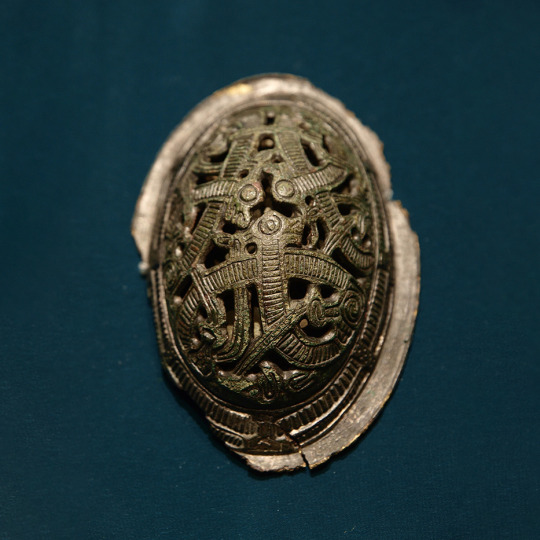
Jellinge style brooch, historic museum, Oslo, Norway. Photo by mararie.
Learn more / Daha fazlası
https://www.archaeologs.com/w/jellinge-style/
#archaeologs#archaeology#archaeological#dictionary#history#art#viking art#viking archaeology#brooch#artificats#jellinge#jellinge style#norway#oslo#museum#arkeoloji#tarih#sanat#viking sanatı#viking arkeolojisi
38 notes
·
View notes
Text

The ruins of Lindisfarne
Source: Entwistle, D. (2017, April 24). Lindisfarne. World History Encyclopedia. Retrieved from https://www.worldhistory.org/image/6547/lindisfarne/

The Viking Gjermundbu helmet
Source: Vitenskapsmuseet, N. (2018, May 31). Viking Age Helmet. World History Encyclopedia. Retrieved from https://www.worldhistory.org/image/8848/viking-age-helmet/
10 notes
·
View notes
Text
Viking Age
-- lasted from 793 to 1066 CE
-- starts with the raid on Lindisfarne
-- ends with the Norman invasion of England
.
Patreon
#studyblr#notes#my notes#history#historyblr#world history#viking history#viking age#scandinavia#scandinavian history#vikings#viking notes#norse#norse history#norse mythology#norse myths#viking mythology#viking myths#iceland#icelandic history#sweden#swedish history#european history#denmark#danish history#viking life#icelandic settlements#viking archaeology#scandinavian archaeology#archaeology
5 notes
·
View notes
Text




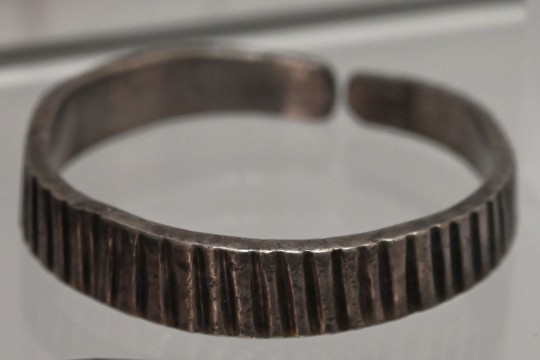
Silver 'Broad Band' Arm Rings, Red Wharf Bay, Anglesey, 900 to 925CE, St Fagans National Museum of History, Wales, Cardiff.
#silver#arm bands#bands#viking#vikings#hoard#ancient craft#ancient living#metalwork#metalworking#Anglesey#wales#archaeology#relic#design
514 notes
·
View notes
Text

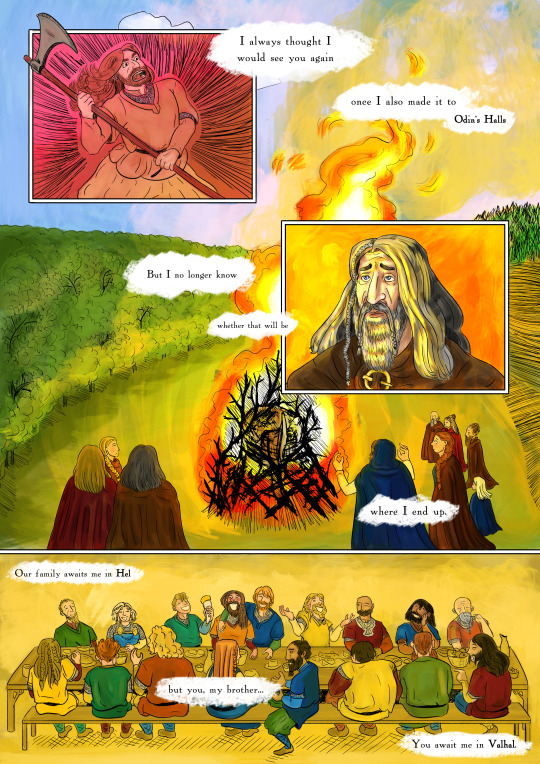
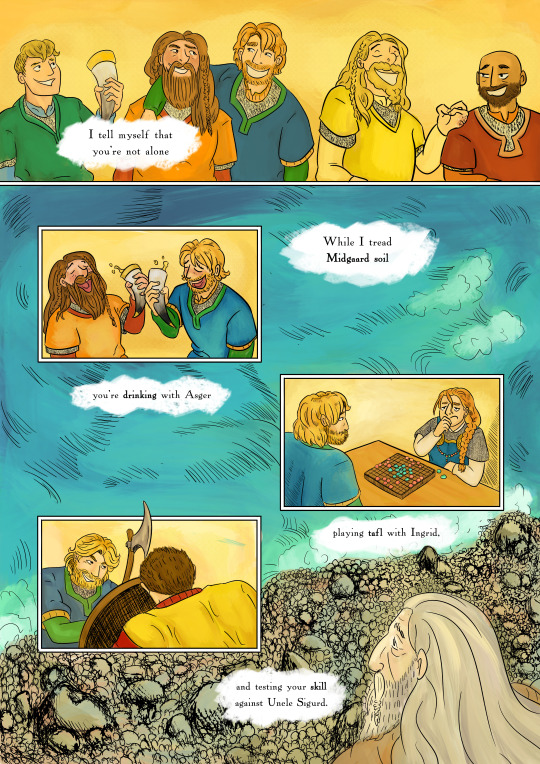


Reunion
In 2021, researchers discovered that an 11th century skeleton uncovered from a grave in Otterup, Denmark in 2005 was related to a skeleton found in a mass grave in Oxford, England in 2008. DNA analysis showed them to be half-brothers, uncle and nephew or grandfather and grandson.
The man found in Oxford died young and it's speculated that he died during the St Brice's Day massacre, an attack on all Danes in England ordered by King Æthelred the Unready after an increase in Danish raids on England. The man found in Denmark died around the age of 50, having lived a farmer's life, but not one without combat.
After a century separated by the North Sea, the two relatives were reunited for an exhibition at The National Museum of Denmark.

#comic#original comic#viking age#artists on tumblr#historical fiction#valhal#archaeology#valkyrie#norse#history#danish history#english history#I'll put links in a reblog; i don't know if links still exclude posts from showing up in tags
1K notes
·
View notes
Text
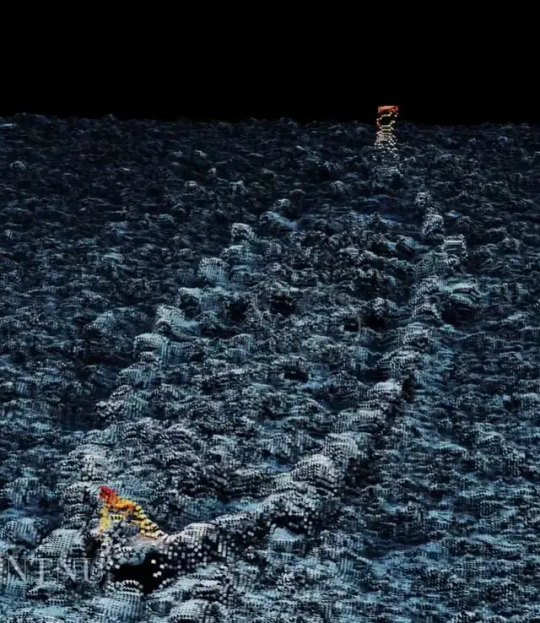
A sonar image of a maybe 700 years old "viking" ship
Archaeologists have discovered the remains of a mysterious ship in 2022 while searching for tonnes of unexploded munitions from WWII that were dumped at the bottom of a lake near Oslo.

So far, there are only sonar images and these show the hull of the 10-metre-long wooden ship at a depth of 410 metres below the surface of Lake Mjøsa, about 100 kilometres north of the Norwegian capital. The fact that it is probably a Viking ship (which must be older then just 700 years, if it is one) can be recognised by the way the ship was built, as it is a clinker construction, and by the shape of the ship itself. What exactly is behind it will become clear after further investigations, which are still ongoing.
127 notes
·
View notes
Text

The Wijnaldum brooch
ig: @woedans / @museumperspective
274 notes
·
View notes
Text
Birka’s warrior woman
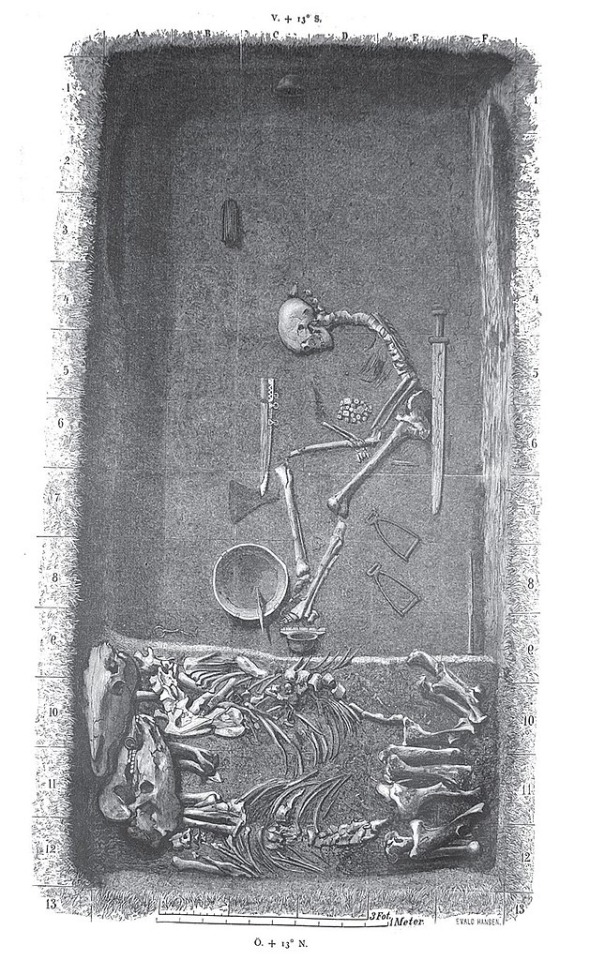
This grave was found on Birka (Björko) in 1878. The grave contained human remains, remains from two horses, bowls, weaponry, a shield(boss), a chess game and saddle stirrups. The burial room was built in wood. Most likely the person was buried seated, with the bones collapsing on themselves. Some remains of textile were found.
The assumption that the person was a man was quickly made and the “high status burial of a Viking warrior” was often cited in research.
It would take until 2017 when both osteological and genetic testing proved the person was in fact a woman. To this day it is the only genetically and archaeologically proven female warrior from the Viking age.
The reason I say genetically AND archaeologically is because it is assumed that gender was a very loose concept in the Germanic age. Biological gender wasn’t necessarily denied, but there are indications that people would take on “the role” of the other gender. A woman could “step up” as a man’s son, as seen in blood feud tales where the patriarch is killed, but if there is no son to avenge him, a woman would “take up the role” and set out, armed for revenge.
Biologically male individuals have been found with “female” attributes such as beads, pendants and certain decoration styles.
From the limited amount of research there is, it seems possible that cross-dressing, gender fluidity and gender role exchange were very normal before mass christianization.
Excavated by: Hjalmar Stolpe
Found in: Birka, Björko, Ekerö - Sweden
Drawing by: Hjalmar Stolpe
#frankish#merovingian#viking archaeology#archaeology#carolingian#charlemagne#field archaeology#viking mythology#merovingian archaeology#germanic mythology#valkyrie#Walküre#Wagner#richard wagner#norse mythology#anglo saxon#field archaeologist#frisian#viking#vikings#germanic#germanic folklore#germanic archaeology#odin#wodan#anglo saxon archaeology#history#jewelry#norse
295 notes
·
View notes
Text
So someone just asked me how my PhD plans are going and im more and more starting to realize that no one is interested in Germanic archaeology. Unless it's pure vikings in Scandinavia itself or you manage to get into those elite (expensive) English universities to study Anglo Saxon archaeology.
now what...?
#does anyone have connections?#help#depressed again#unwanted#viking archaeology#merovingian#carolingian#germanic#germanic archaeology
5 notes
·
View notes
Text
Humans have modified their bodies in various ways throughout history, tattooing, piercing, scarring, implanting, or even deforming parts of their anatomy. In spite of its ubiquity, it's not always clear why. Cultural traditions are a strong factor, as are beauty standards, which vary across time and place.
A new analysis of remains of individuals who lived in Viking Age Gotland around a thousand years ago suggests that their own body modifications reinforced social identities.
Continue Reading.
57 notes
·
View notes
Text

The Lewis Chess Pieces
Artifacts crafted from whale teeth and walrus ivory with origin in Scandinavia, potentially tracing back to Trondheim in Norway.
Source: https://www.nationalgeographic.co.uk/history-and-civilisation/2022/05/these-are-some-of-the-worlds-most-spectacular-viking-artefacts
9 notes
·
View notes
Text
72 notes
·
View notes
Text

Patreon
#studyblr#notes#my notes#history#historyblr#world history#viking history#viking age#scandinavia#scandinavian history#vikings#viking notes#norse#norse history#norse mythology#norse myths#viking mythology#viking myths#iceland#icelandic history#sweden#swedish history#european history#denmark#danish history#viking life#icelandic settlements#viking archaeology#scandinavian archaeology#archaeology
1 note
·
View note
Text

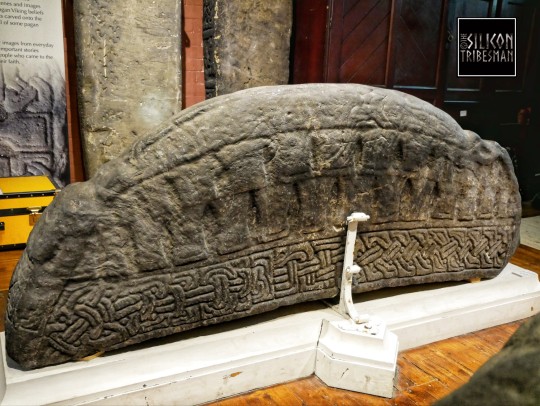





Govan Old Stones Collection, Viking 'Hogback' Stones, Govan Old Parish Church, Glasgow, Scotland
#viking#viking culture#viking art#viking life#norse#hogback stones#hogbacks#stonework#relic#knotwork#ancient living#ancient craft#ancient cultures#archaeology#Scotland#gravestones#marker#symbols#designwork#Glasgow
189 notes
·
View notes